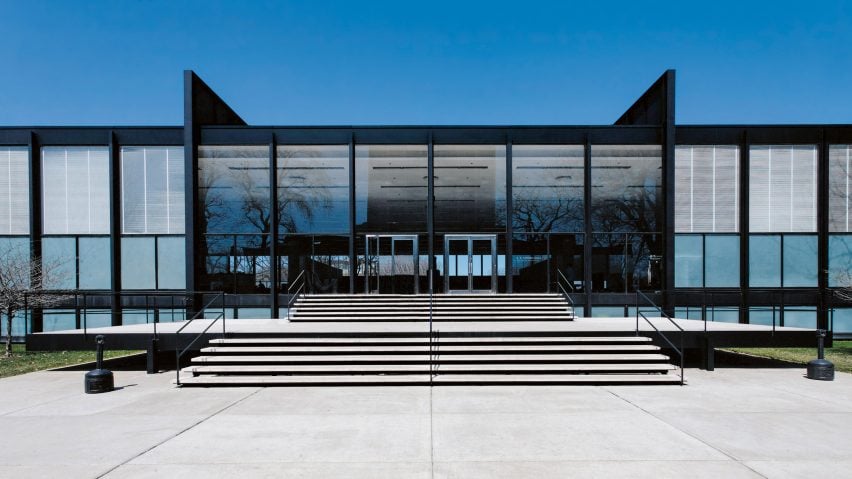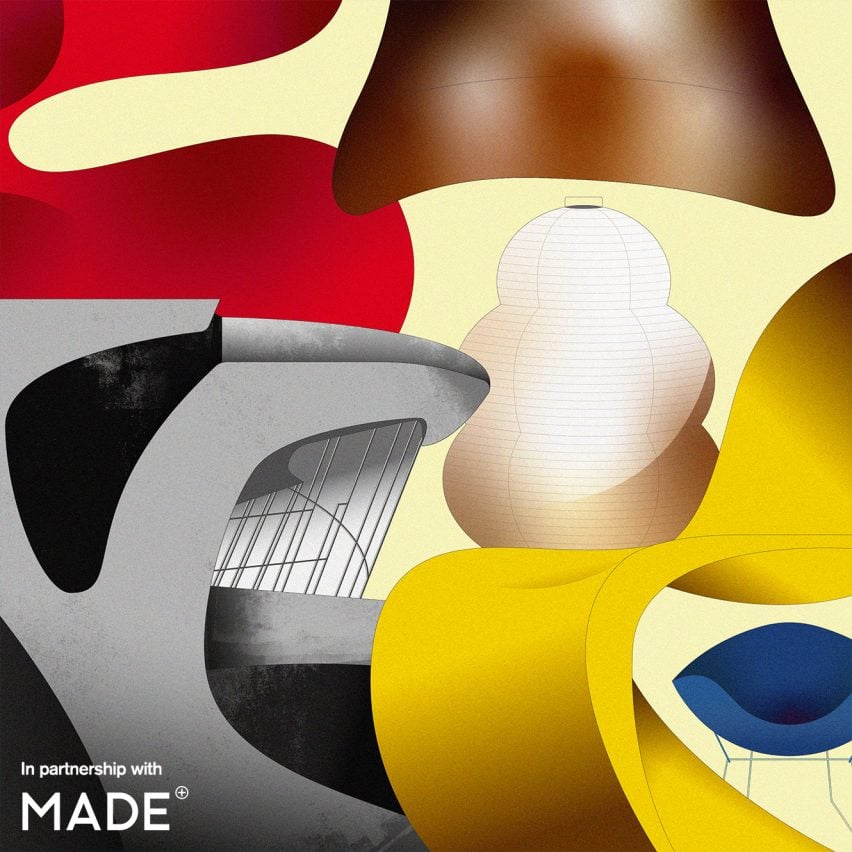
"There was a profound belief in the power of the polymath during the mid-century period"
We should bring back the holistic approach and interdisciplinary ethos of the mid-century modern designers, argues Dominic Bradbury as part of our mid-century modern design series.
There are many magical ingredients that, mixed together, help to explain the enduring resonance of mid-century modern design.
Post-war architects and designers were able to build upon foundations set by the early modernist pioneers of the twenties and thirties, yet their work was also enriched by access to fresh, inventive materials and ways of making, from plywood and plastics through to reinforced cement and concrete shell structures. There was an infectious sense of optimism and a strong desire for a fresh beginning, but also a renewed respect for self-expression and form-giving.
More than this, there was also a profound belief in the benefits of creative collaboration and the power of the polymath during the mid-century period.
During the fifties and sixties, the boundaries between the various disciplines of design blurred and dissolved. Sculptors designed chairs, architects designed lighting and graphic designers created textiles within an important process of multi-disciplinary cross-fertilisation.
There was no one springing up to say that an architect should not be designing a sofa
Unlike today when the specialists rule supreme, there was no one springing up to say that an architect should not be designing a sofa or questioning why a ceramicist might suddenly change direction and embrace glass-making or graphic design.
There was a holistic approach to many landmark post-war projects, where an all-encompassing eye helped to ensure that the multiple design threads were woven together in a richly layered but always engaging and fully cohesive entirety, whether that be a hotel, a museum, an office building or a college.
In Scandinavia, architect Arne Jacobsen famously pushed his remit into the world of interiors, furniture, flatware and many other disciplines. His SAS Royal Hotel in Copenhagen, for instance, is a fully rounded masterpiece, where landmark Jacobsen pieces such as the iconic Egg and Swan Chairs sit within the context of architecture and interiors by the same author. At St Catherine's College at the University of Oxford, Jacobsen involved himself in every detail of the design, down to the choice of fish in the ornamental pool.
Italy was another country where the multi-disciplinary moderns rose to prominence during the post-war period, particularly in Milan. The inspirational figurehead was the great Gio Ponti, whose portfolio encompassed architecture, interiors, lighting, furniture, glassware, ceramics and more, as well as teaching and magazine editing. His landmark buildings include the Pirelli Tower in Milan and the magical Parco dei Principi Hotel in Sorrento.
Meanwhile, in the United States, designers such as Raymond Loewy, Henry Dreyfuss and Donald Deskey developed studios on a multi-disciplinary model, encompassing fields such as product design, graphic design and corporate identity programmes.
The model offered by the polymath and inter-disciplinary design has gradually been eroded
Over time, however, the model offered by the polymath and inter-disciplinary design has gradually been eroded, leading to inevitable sterility and countless lost possibilities. By the eighties and nineties the specialists had taken control, with architects, interior designers, lighting consultants and landscape designers all defending their own territory.
This shift was related, in some ways, to the increasingly technical demands of projects as manufacturing and construction systems grew more complex and regulations got tighter. Yet, at around the same time, courses were also becoming increasingly specific within universities and higher education institutions, while creative crossover between departments became a rarity rather than a given.
The education system in Britain – and many other parts of the world – tends to push students down increasingly narrow corridors of expertise, while for all-rounders it is harder and harder to find a role within labyrinthine knowledge networks. Ironically, in a world of artificial intelligence and digital interfaces, inter-departmental communication of all kinds can be harder to achieve than ever, despite the enhanced potential for joined-up thinking.
The pandemic saw a wholesale retreat towards bunkers of isolated creativity. Now, in an age of specialisms and departmental hierarchies, it is not at all uncommon to find complete communication breakdowns even among colleagues, as well as the collapse of creative exchanges and collaborative processes. This is true not only of government-funded organisations and universities but also of the private sector, where the right hand has little idea of what the left hand is trying to accomplish, let alone working in tandem.
There are so many reasons to revisit the golden era of mid-century design
There are, however, some grounds for optimism within the world of architecture and design. Practices such as Mork-Ulnes, Tsao-McKown, Studio David Thulstrup, Vincent van Duysen and others fuse architecture and interior design in their work while John Pawson, Antonio Citterio and Piero Lissoni, for instance, are respected for their furniture as well as their architecture. There are certain echoes here of the polymaths and multi-disciplinarians of the golden age of mid-century design, who fostered a similar spirit of creative exchange and cross-pollination.
There are so many reasons to revisit the golden era of mid-century design. The polymath masters remain a source of inspiration with their ability to think outside the box and connect the disciplines within a rounded design philosophy. This was true of Charles and Ray Eames as much as Carlo Mollino or Alvar Aalto, all of whom pushed at the boundaries of design while holding on to innovative projects defined by a true sense of ambition, integrity and cohesion.
No wonder that their work continues to resonate so widely, even today. Let's hope that the polymaths and the inter-disciplinarians are at last beginning to make a comeback, because we should be welcoming them with open arms rather than constantly trying to push them back into their pigeonholes.
Main image of Crown Hall by Ludwig Mies van der Rohe is courtesy of the Library of Congress.
Dominic Bradbury is a writer and journalist specialising in architecture and design. He has written over thirty books, including a number of titles focused on the mid-century period. These include his latest book, the Atlas of Mid-Century Modern Masterpieces, and also the Atlas of Mid-Century Modern Houses, both published by Phaidon.

Mid-century modern
This article is part of Dezeen's mid-century modern design series, which looks at the enduring presence of mid-century modern design, profiles its most iconic architects and designers, and explores how the style is developing in the 21st century.
This series was created in partnership with Made – a UK furniture retailer that aims to bring aspirational design at affordable prices, with a goal to make every home as original as the people inside it. Elevate the everyday with collections that are made to last, available to shop now at made.com.